Our Blog - South Africa Safari - Day 3
Today we stayed in Cape Town for a tour of the city. We first started by heading up to Table Mountain. This was one of the things that was "weather dependent" since if it is too cloudy (which you will see in a picture tomorrow), you can't see anything, and if it is too windy, the cable car that goes to the top is closed. We started saying we were the "lucky bus" since the weather was perfect this morning to see Table Mountain. So what is Table Mountain? It is a flat-topped mountain overlooking Cape Town. There is a cable car that goes to the top and you can walk around and get great views.
These first pictures were taken from the bus on the way up to where the cable car starts, and are just views of the city.
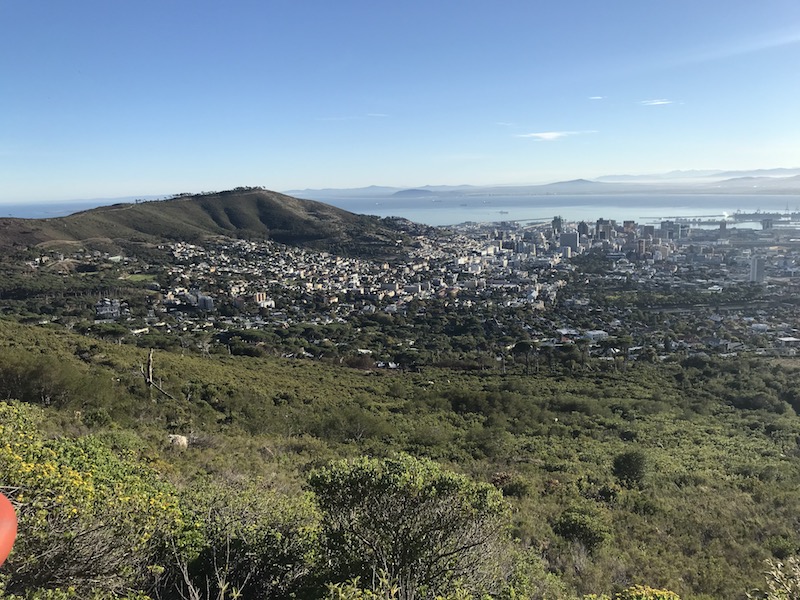
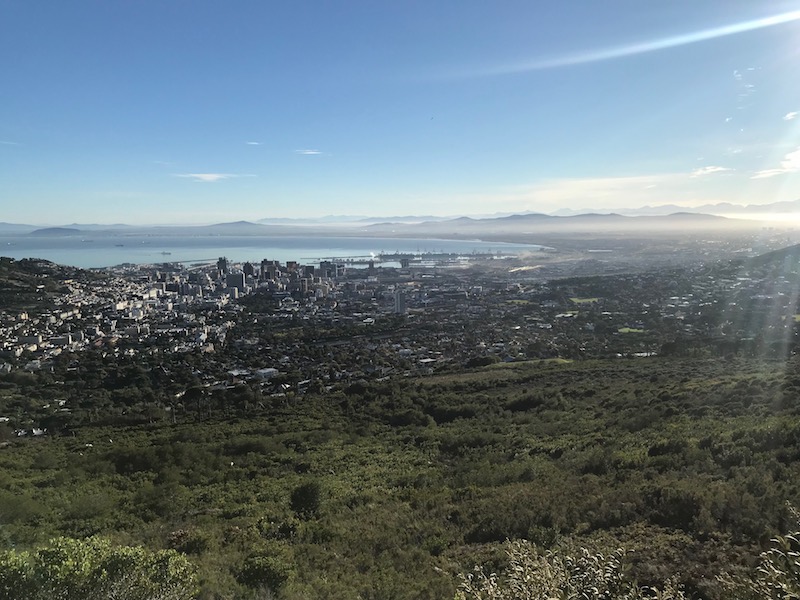


The cable car lower station is 991 feet above sea level and takes you up to the top at 3,501 feet. The original cable car was opened in 1929. The last update, in 1997, upgraded the cable cars to a new model that rotates 360 degrees during the ascent or descent, giving a panoramic view over the city.
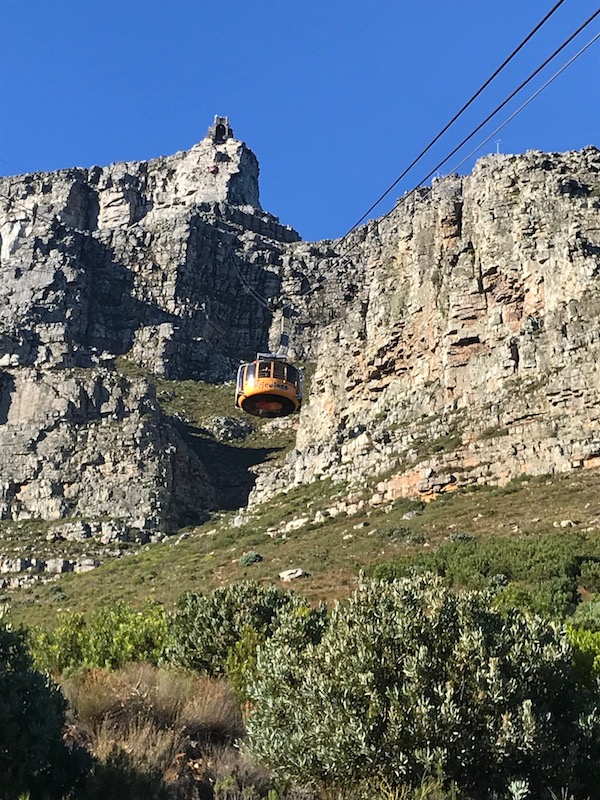
Here are my pictures on the way up .... it is really a steep ascent! In the 3rd picture, I grabbed a good view of Lions Head. If you look at the little rocky peak on the left, it looks like a lions head. Then follow to the right, and you can picture going down the back of the lion and then back up a little slope where his butt would be.
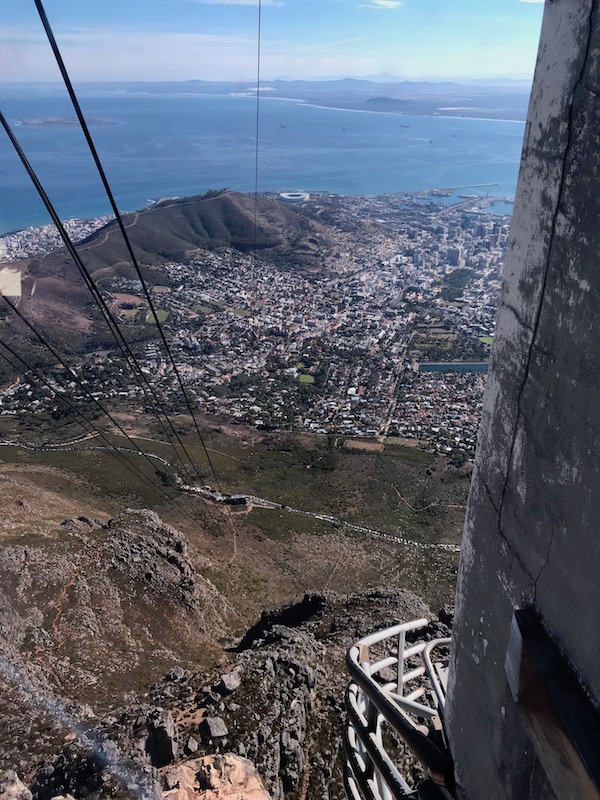
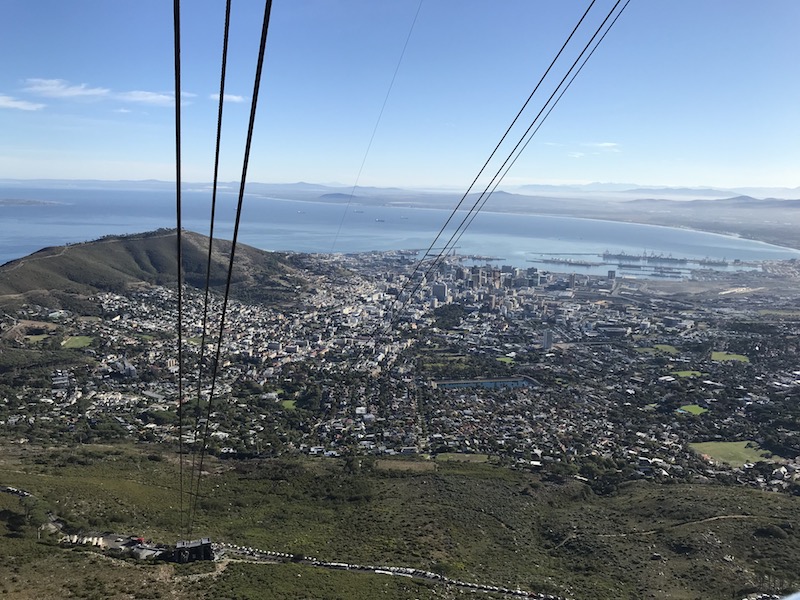

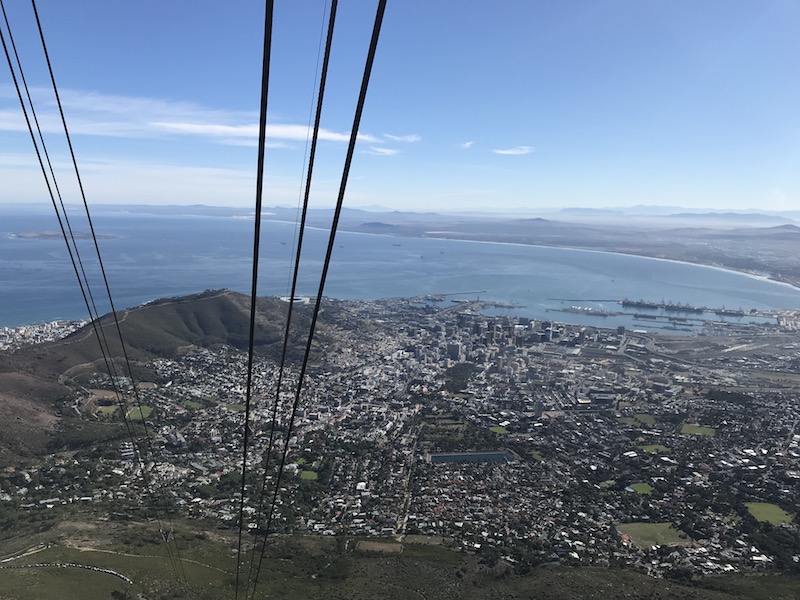
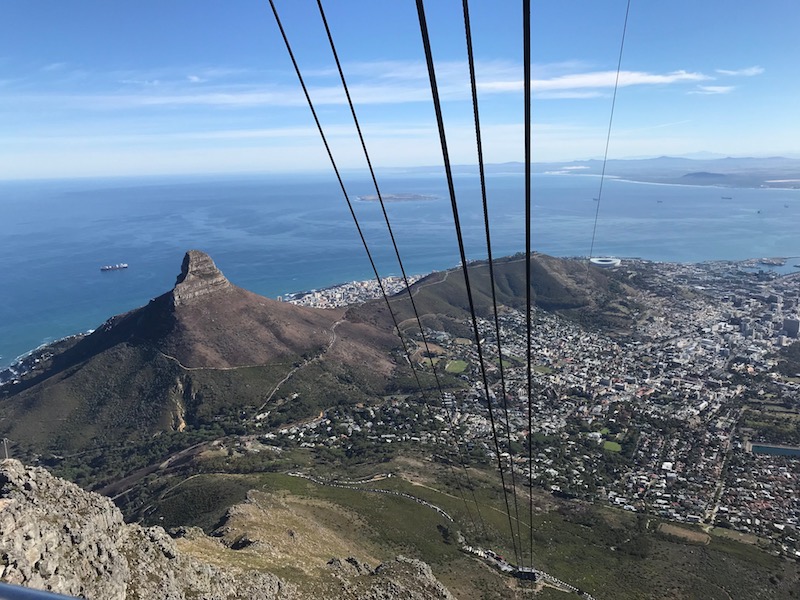

Now to pictures of the actual mountain and an attempt to show how rocky and sheer the cliffs are. It is interesting when you can see the shadow of the cable car on the cliff.


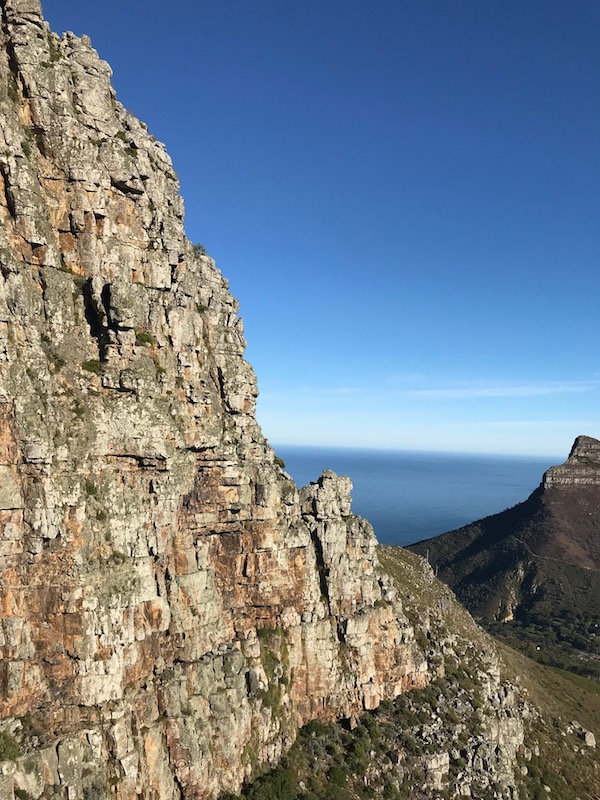
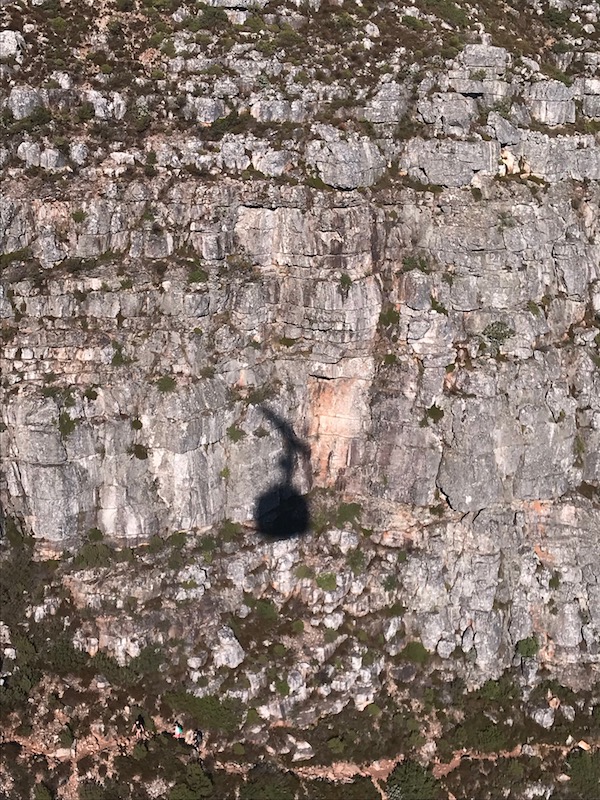

You can walk around the plateau and get great views. I have just a random set of the best pictures (in my opinion) although I tried to not get too many of Cape Town itself, since I have some of those already from the cable car.
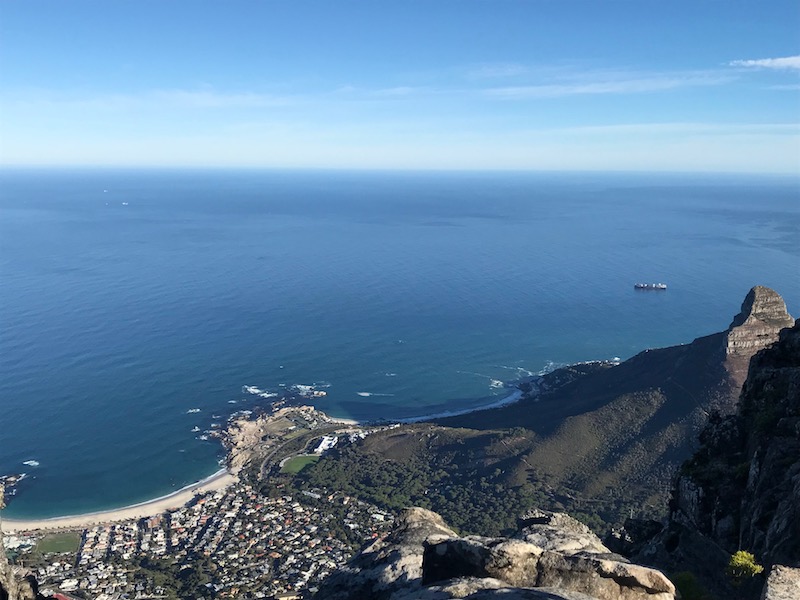
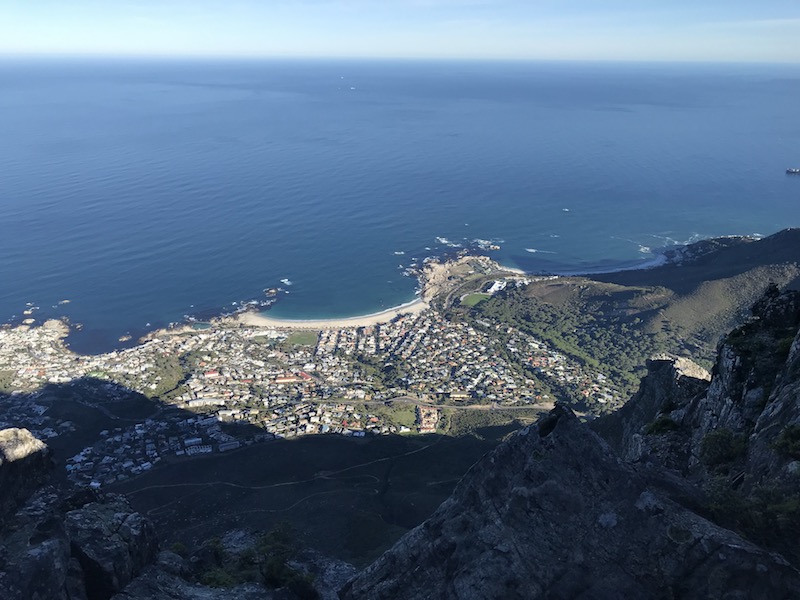
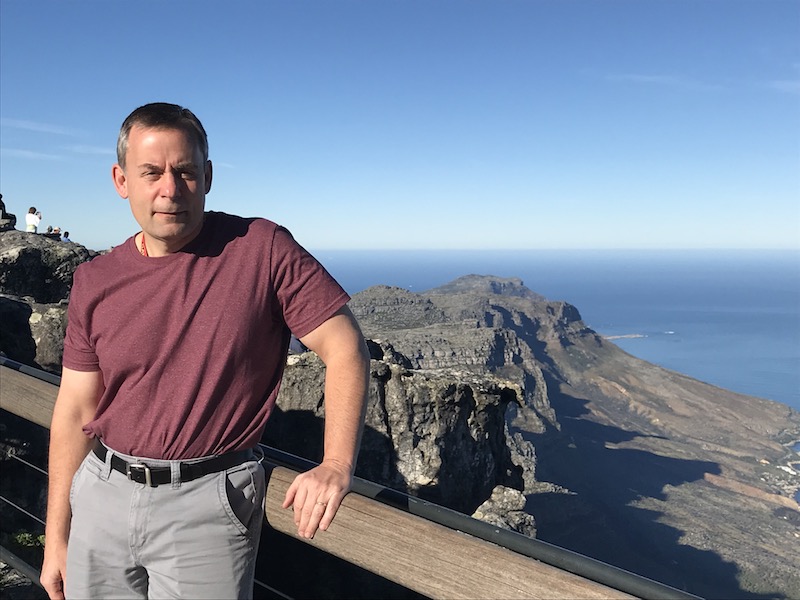
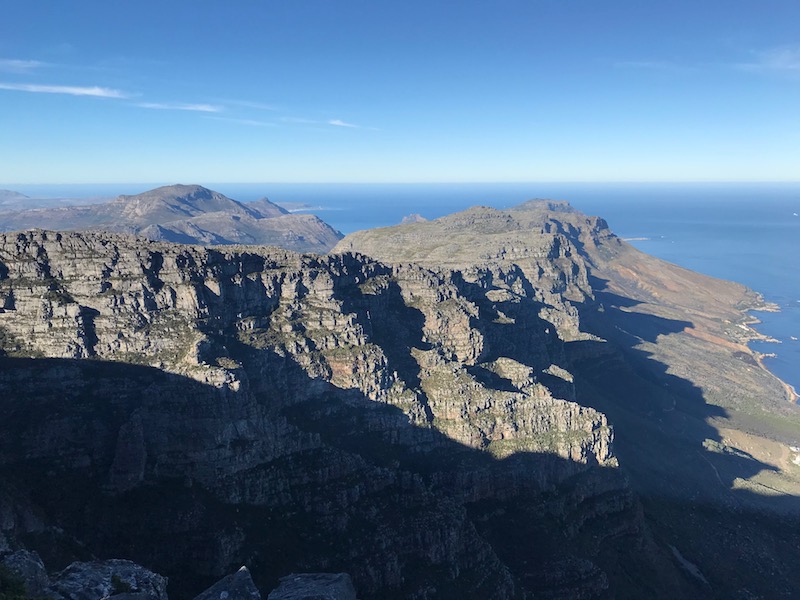

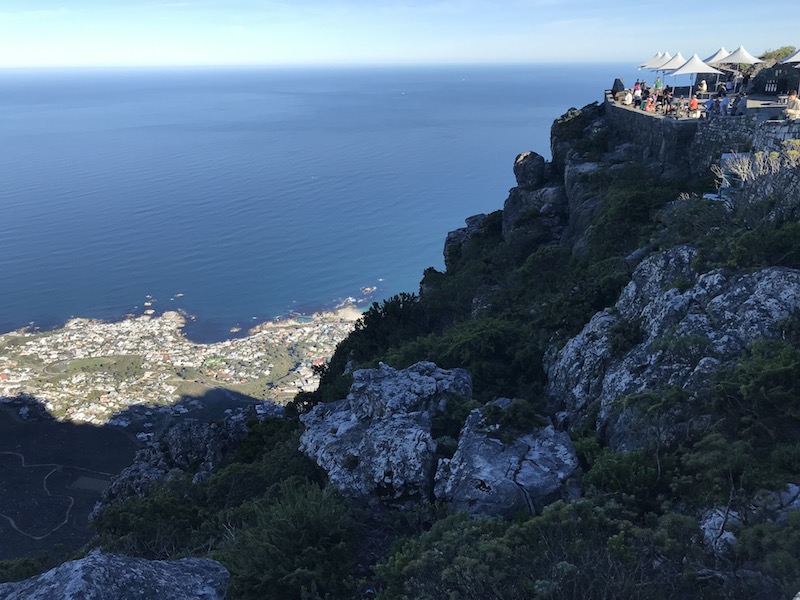
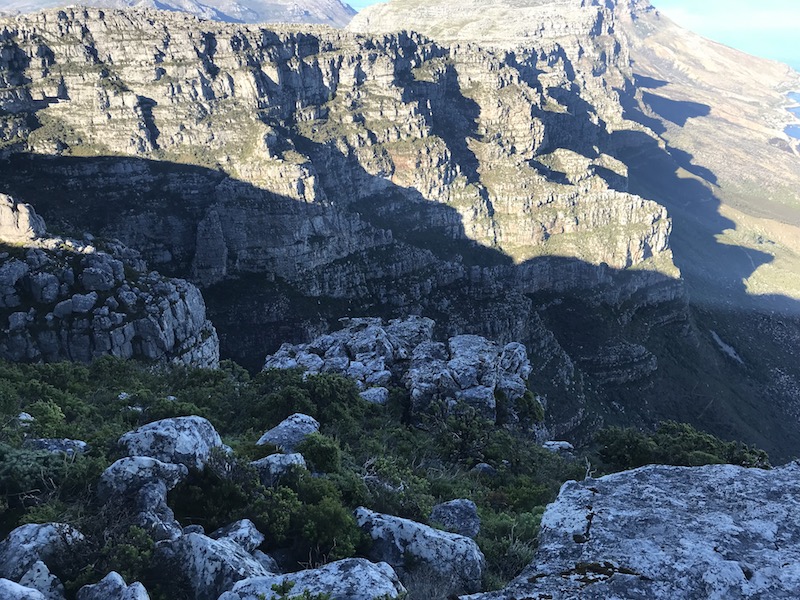


The first view of a Dassie (the brown "blob" in the middle of the picture on the rock). The official name is a Procavia Capensis, it looks like a big guinea pig and is normally about the size of a hare. They have long been considered the closest living relatives of elephants although not all scientists agree with this. Hard to look at this little furry thing, living up in the rocks on a cliff, and think that they are related to elephants. A little further on and we were able to get up close enough to almost touch one ... as he was just sitting in a little crevice in the rocks.
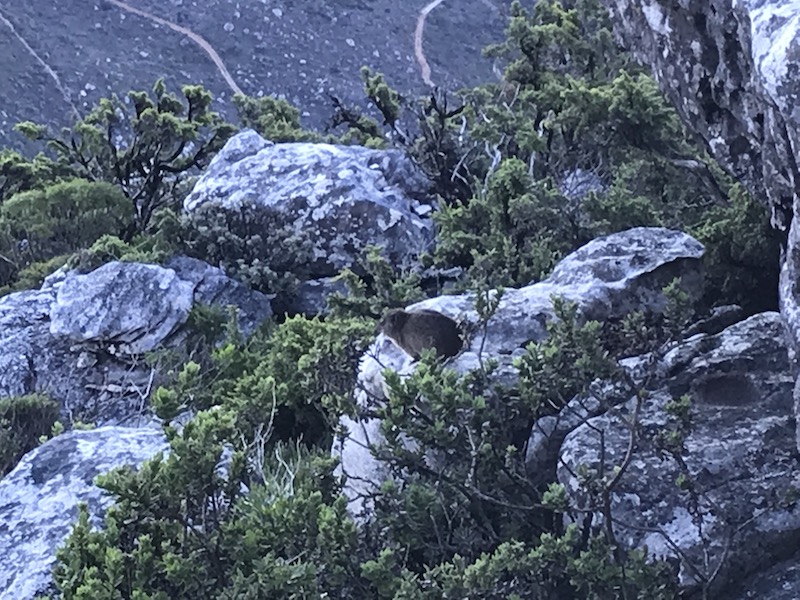

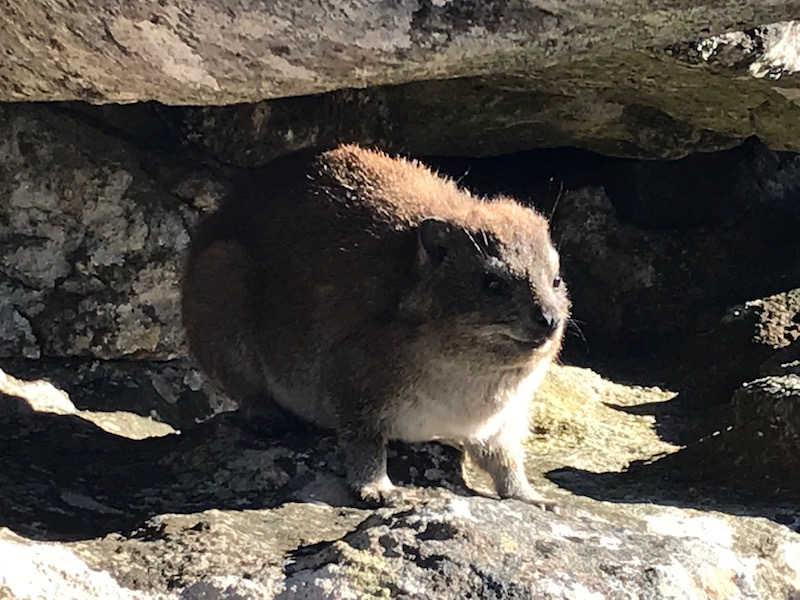
It is an odd feeling for us to actually have our picture taken together! Normally, either Tom is in the pictures or I am, but we are normally traveling by ourselves and don't give our phone/camera to strangers. In this case, we were with a group and most of us took turns taking pictures of the couples together.
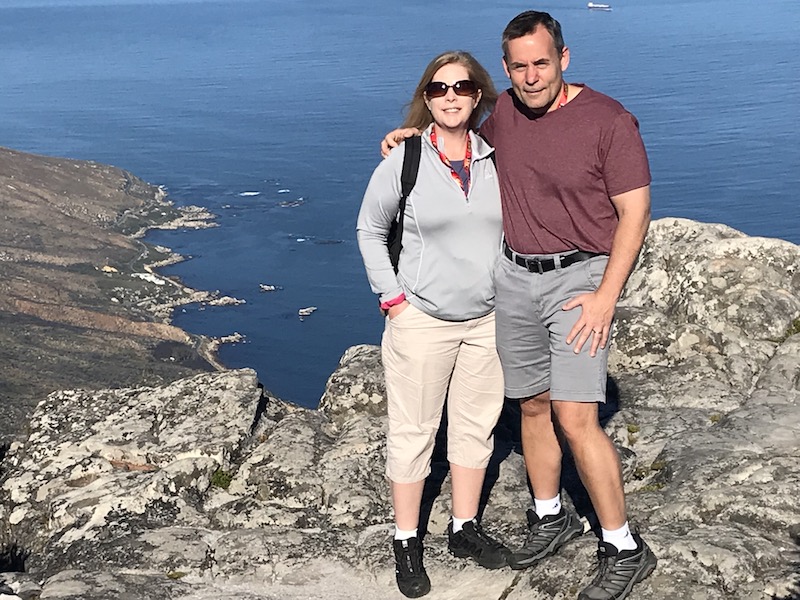
Maybe a couple pictures of Cape Town and the bay ... it looks so tiny from way up there! In the 2nd picture, you can see the stadium (the egg-shaped white thing on the right) and Robben Island, which is where Nelson Mandela was imprisoned during Apartheid. More about Mandela on Day 10.
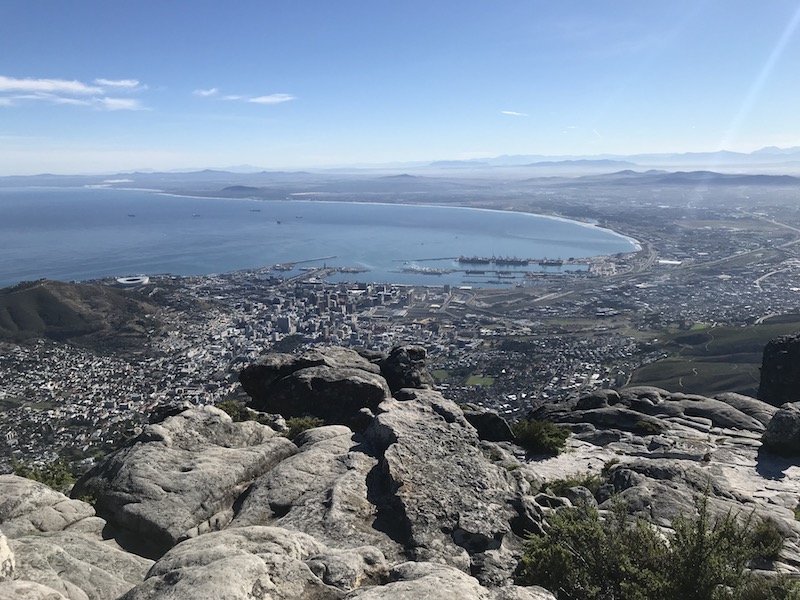

It was a bit windy up there ... as you can tell from my hair blowing across my face.
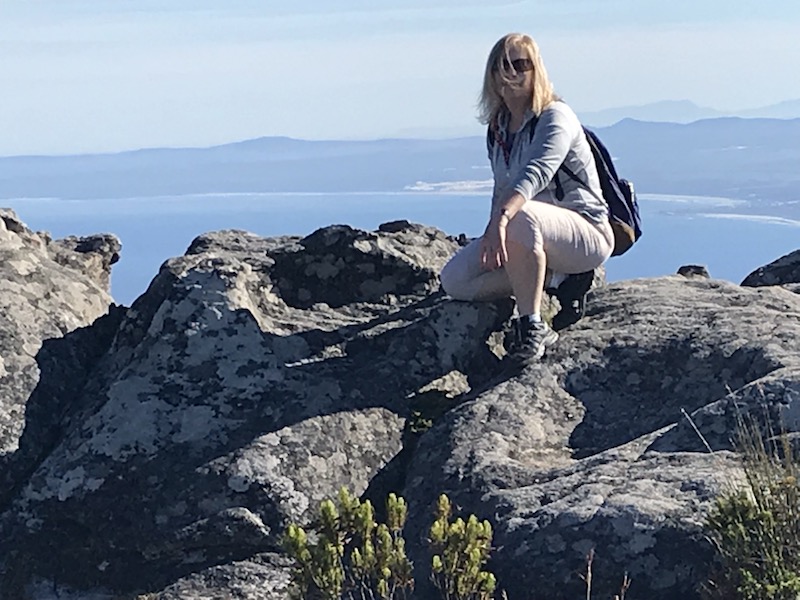
Just a quick view of the flat plateau at the top. It is very rocky but with low shrubs growing everywhere.
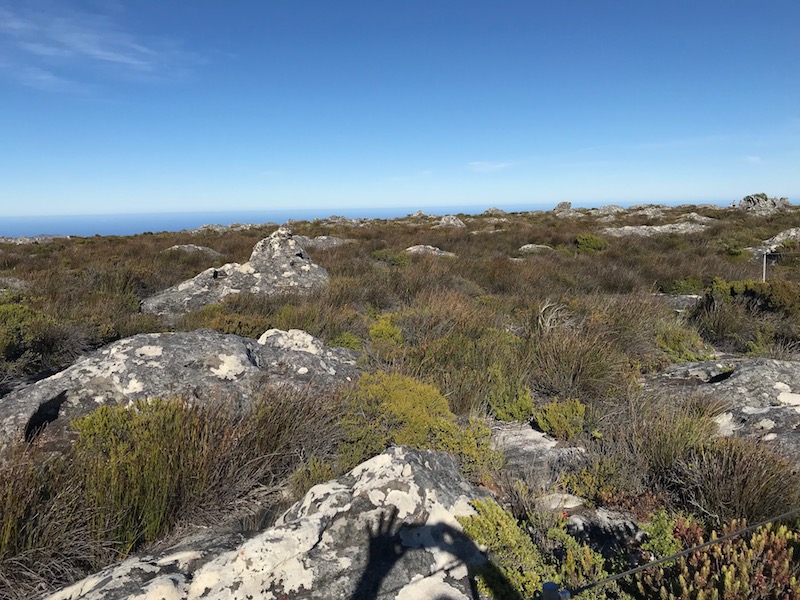

Here we have Tom with the Lions Head as well as Robben Island.
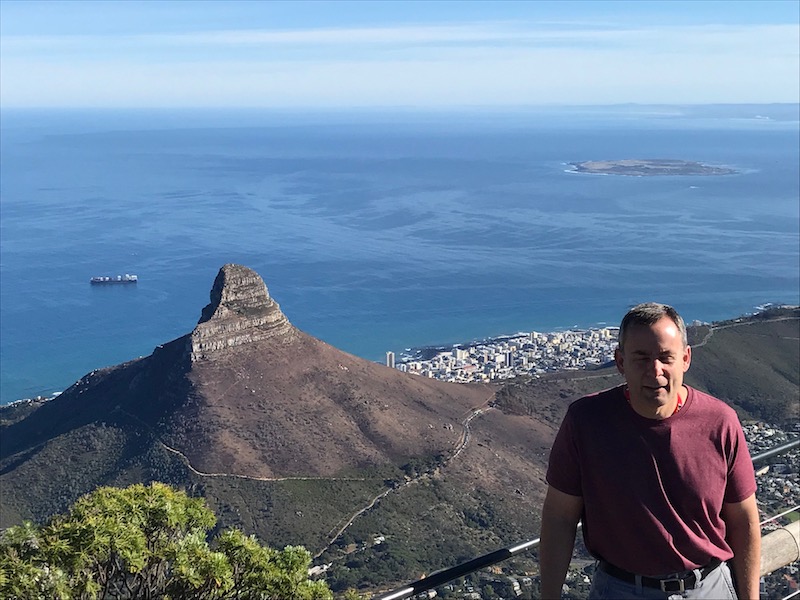
Bo-Kaap (meaning “above the Cape" in Afrikaans) is a historic neighborhood with many brightly painted houses. Some of the homes date back to the period 1763 to 1768. This area was originally where emancipated slaves from Malaysia, Indonesia, India, and Sri Lanka settled. Our guide told us that they started being painted bright colors because these colors were ones that nobody was buying, or left over from other things and were very inexpensive. However, other information says that the residents began painting the houses in vivid colors in preparation for the Muslim celebration of Eid. Either way ... it is an interesting set of streets.
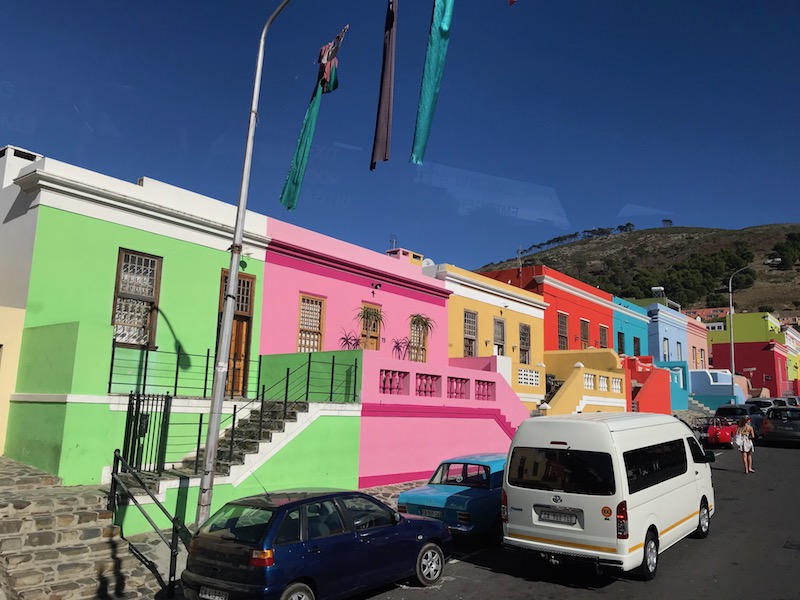
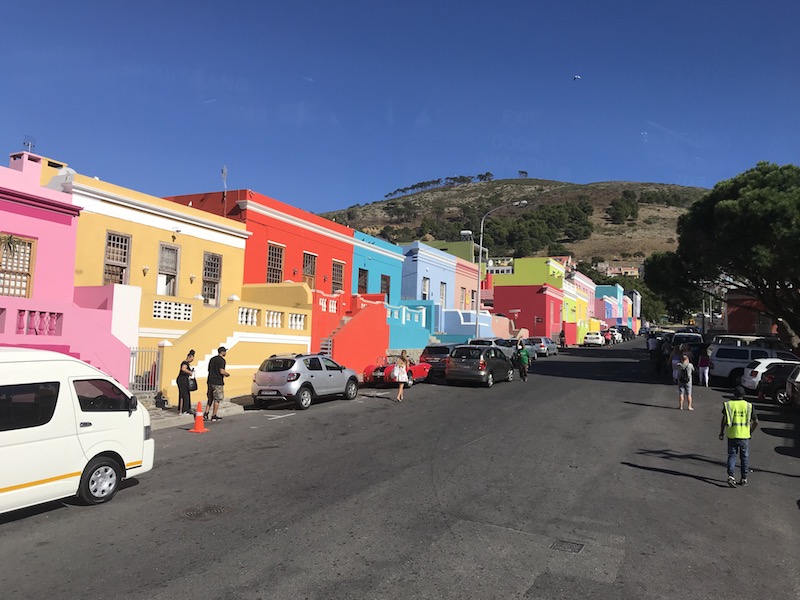
The bridge to nowhere is officially the Foreshore Freeway Bridge. It was designed in the 60's and started in the 70's and was meant to be a freeway that would alleviate traffic congestion. It has been like this since 1977 when the project ran out of money.
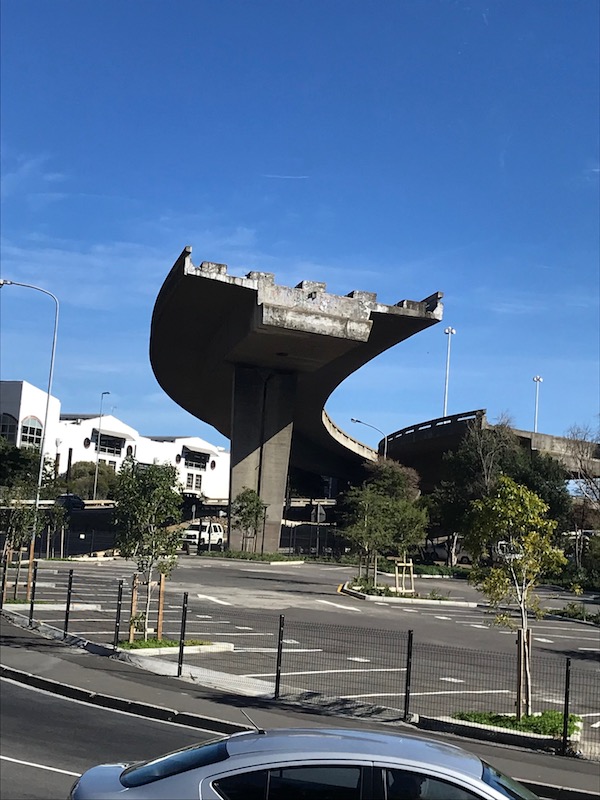
Right in the middle of town is the Castle of Good Hope, a bastion fort built in the 17th century. While now it is in the middle of the city, it was originally on the coastline of Table Bay, before a program of land reclamation in the 30s and 40s created everything from it to the waterfront. The fortress housed a church, bakery, various workshops, living quarters, shops, and cells, among other facilities.
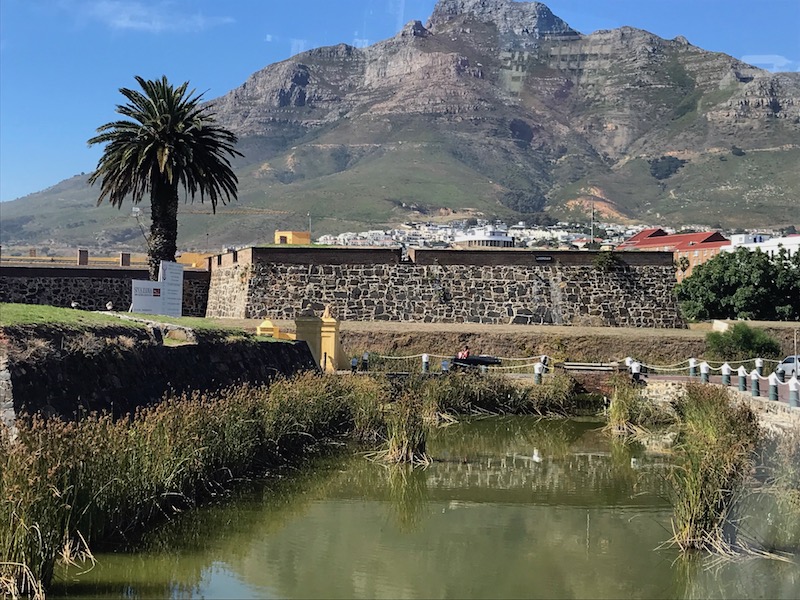
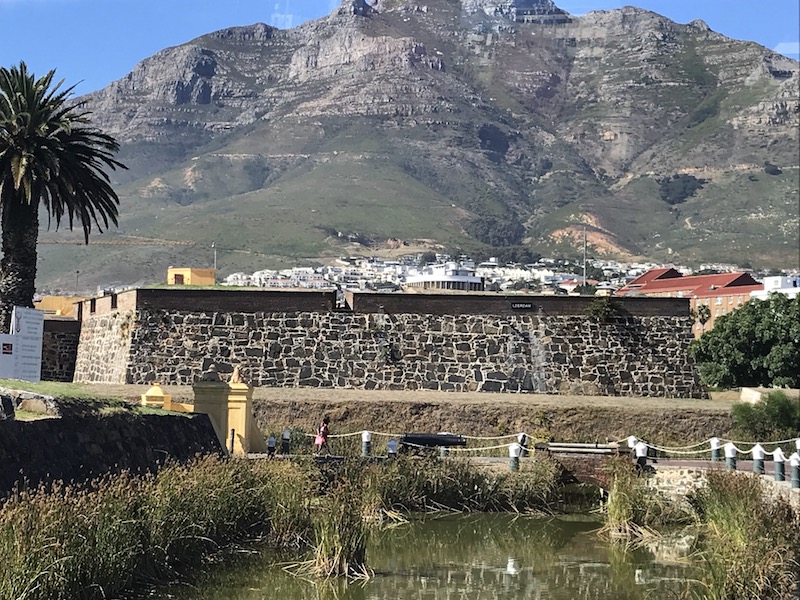

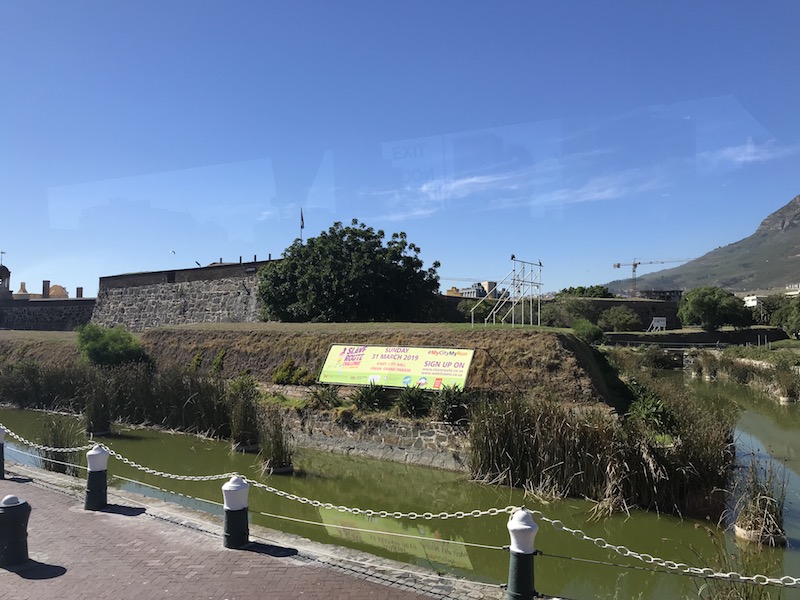
There is a semi-scary statue of Nelson Mandela on the balcony at Cape Town City Hall, with him looking out and waving at the people passing by.

Then we hit the beach since it was a great weather-day. Here you an see Lions head and the shape of the lion across the bay.
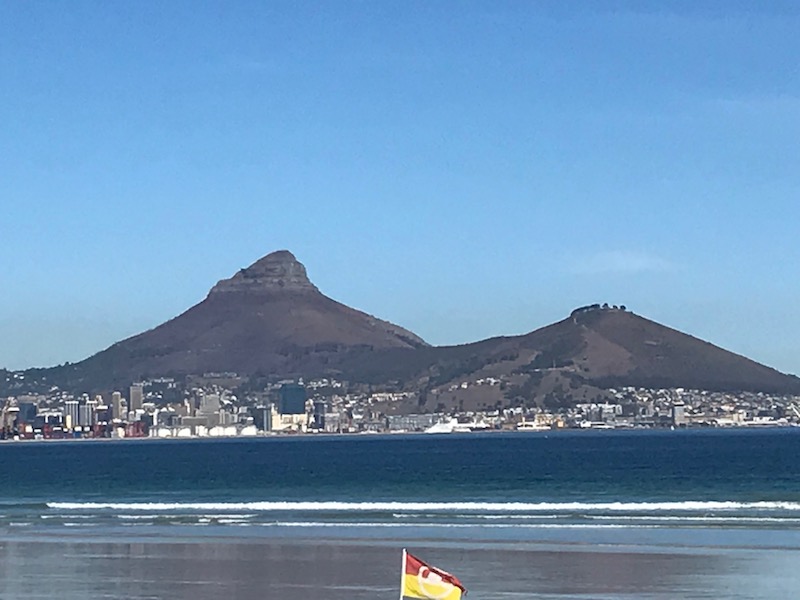

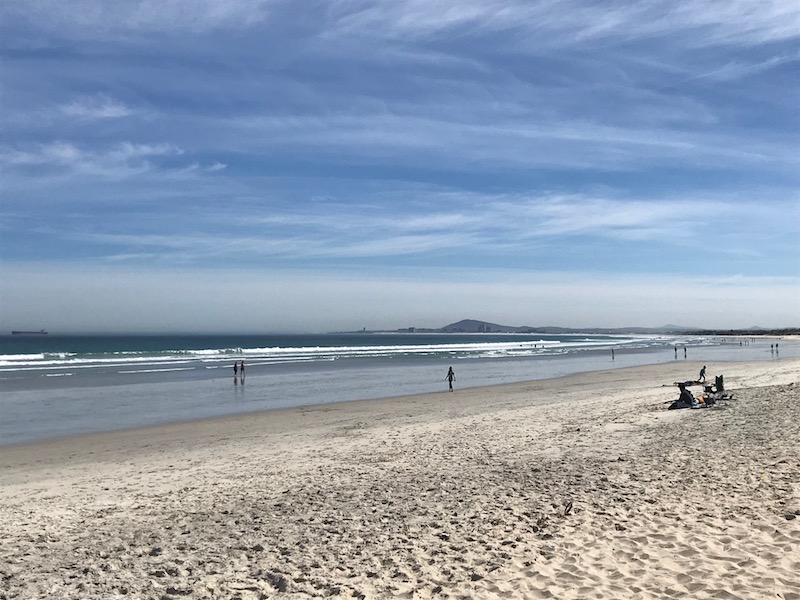
We then got our first experience of "load shedding". We had to delay the start of our diamond museum tour because the power was out. They are having rolling blackouts across South Africa, supposedly due to infrastructure issues and corruption (not sure how true that is). But we just had to wait about 30 minutes, which we spent next door having a glass of wine.
When the power came back on, we went through a tour of Shimansky Jewelers & Museum that took us through the origins of diamond mining and includes explanations of color, cut and clarity. The tour talked about how the diamonds were first formed over 3 billion years ago, and have been known throughout history. They didn't start being as expensive as they are now, and the high prices are due to a combination of royalty wearing them and the De Beers family and marketing diamonds as a symbol of love to manipulate consumer demand. The first picture was explained as the diamond in it's natural form.

The 45.52 carat Hope Diamond, found in Southern India. Rumor has it that it is cursed and bad luck has befallen some of its owners.

The Premier Rose I diamond, at 137.02 carats, is one of the largest D-color flawless diamonds in the world. It was found in 1978 in South Africa and is cut in a triangular shape.

Most diamond cuts reflect light from the top, and the better reflection, the more is sparkles. This cut, called My Girl, is a square-cut with 8 sides and can reflect light from any angle, resulting in more sparkle.
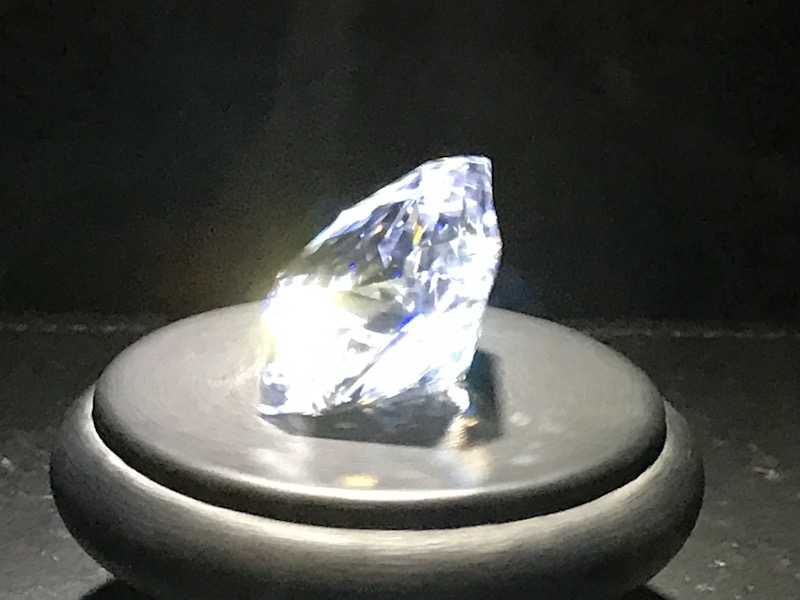
We ended up there on a Sunday, so we missed being able to watch the diamond cutters at work. Needless to say, you end the tour in the boutique where you can buy something if you want.
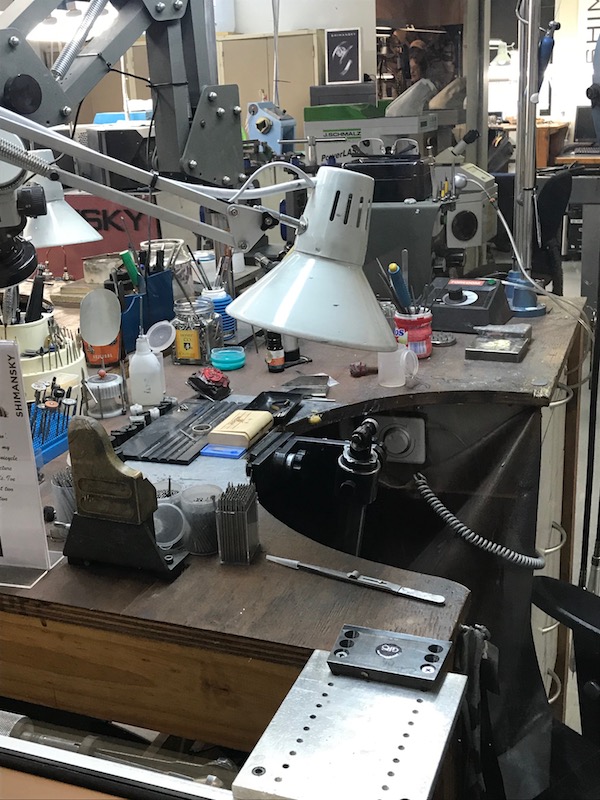
Then back on the bus for a bit more of a tour around the city. This building has some interesting art deco architecture, specifically with the frieze around 3 sides of the building depicting scenes from the colonial history of South Africa. On one facade are carved granite figures representing nine ethnic African groups: "Xosa", "Pedi", "Maasai", "Matabele", "Basuto", "Barotse", "Kikuyu", "Zulu", and "Bushman".

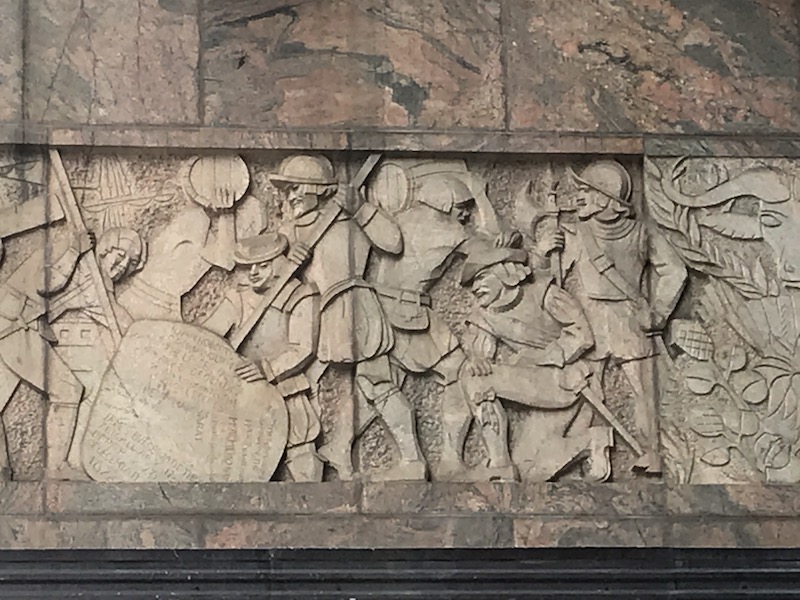
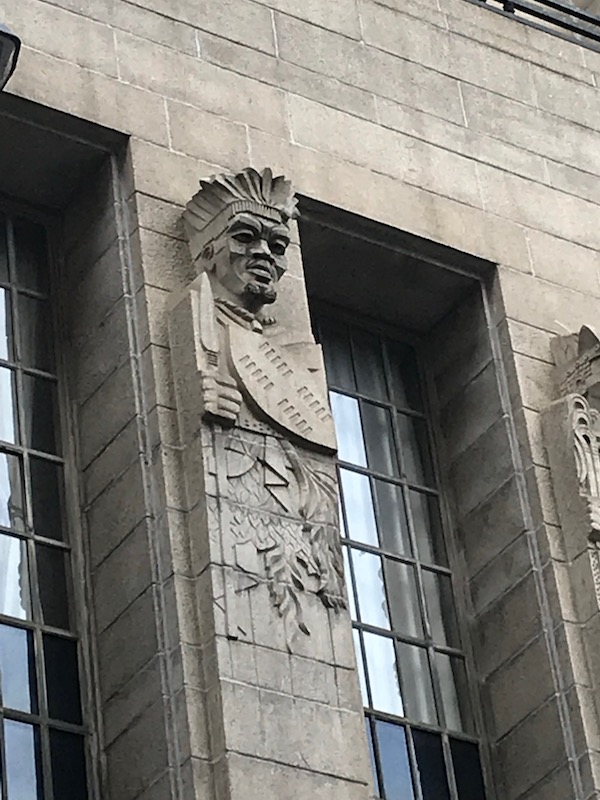

One of the optional items that we could add was a "Home Hosted Dinner", where we would go out to someone's house and have dinner with them. It sounded interesting, so we decided to go. We were driven out to the home of Desmond and Lorette and had a great dinner. We got to enjoy the company of them and her parents, and taste some home-cooked dishes. After an appetizer of chicken curry with roti (bread), we had a well-known South African dish called Bobotie. It is spiced hamburger with then a milk-soaked bread layer, topped with an egg mixture, then baked. They sat with us and talked about the various dishes and how they were cooked, a little about themselves, life in South Africa, etc. It was, all-in-all, a great evening ... it felt like we were all over having dinner at a friends house. She even sent us the recipes so that we can try them ourselves!
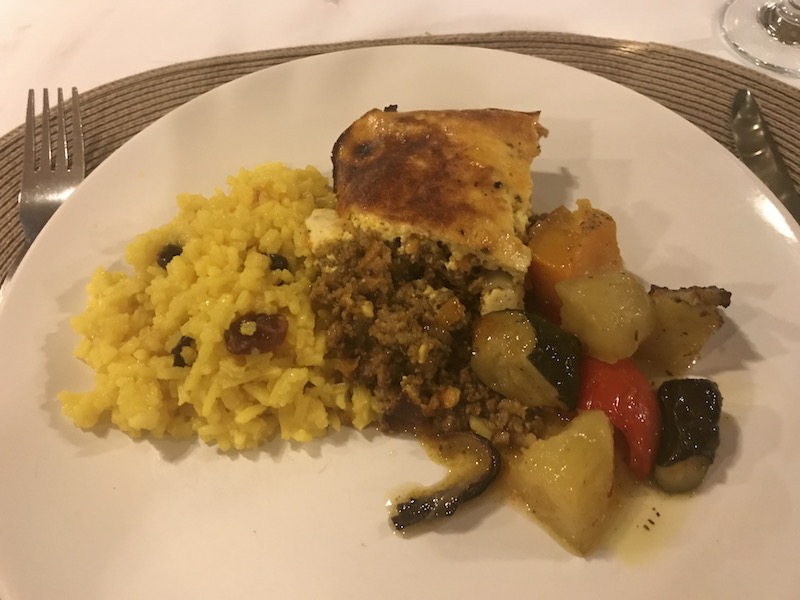
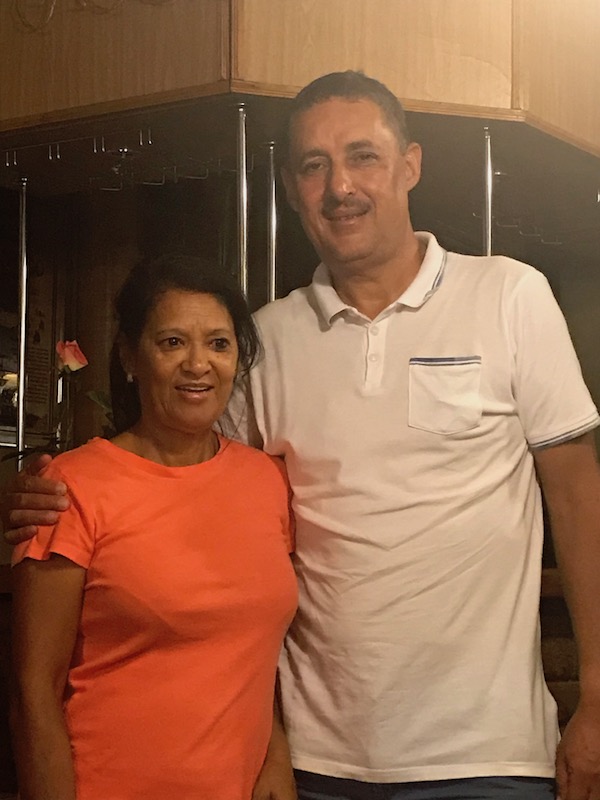
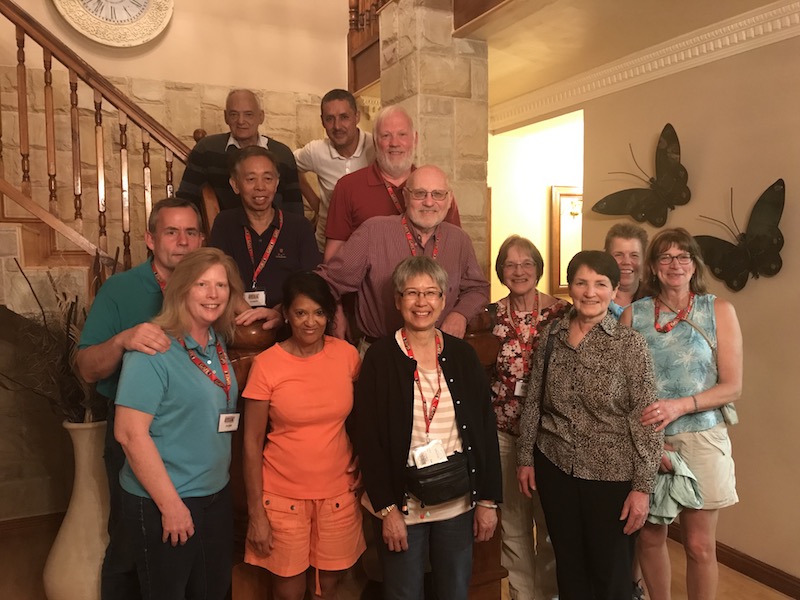
You can go back to the main Safari page or continue on to Day 4